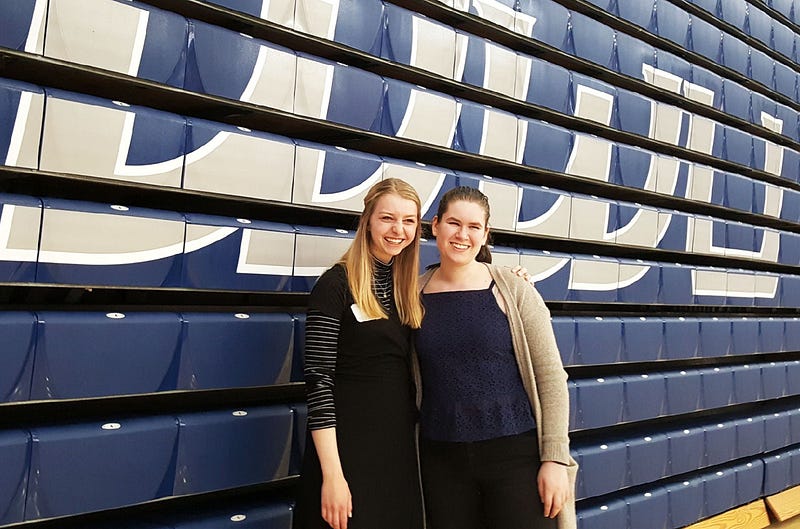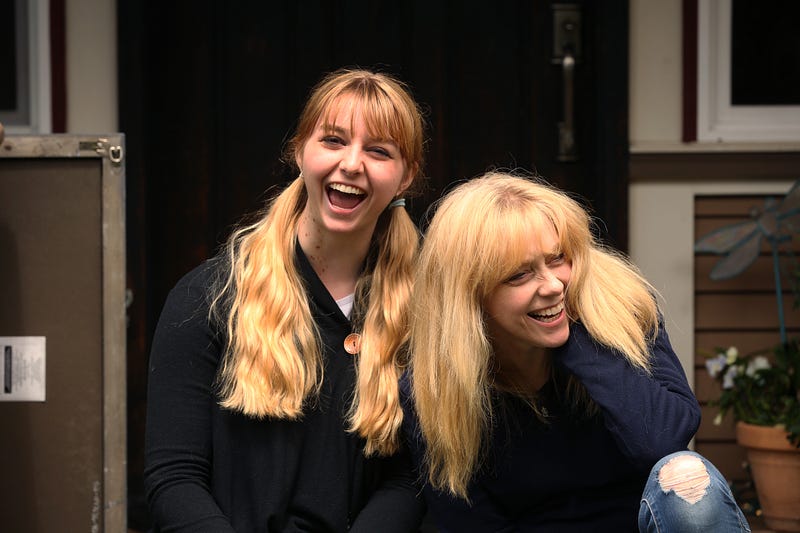Where We’re At
33 years between me and my mom’s college experience, where does journalism stand on inclusivity?
By Lauren Gallup
Heidi transferred from Spokane Falls Community College to Washington State University in the fall of 1985. Already a junior with her associate degree, she knew she wanted to pursue journalism. Luckily for her, the Edward R. Murrow School of Communications at WSU was both highly regarded for their journalism studies and close to home.

She made great strides in the department. She was a copy editor and reporter for the campus paper, The Daily Evergreen, where she was given an opportunity to interview the university president. She became president of the university’s Society of Professional Journalists chapter, with whom she traveled to the state conference at Western Washington University. She was minoring in political science to compliment her journalism degree.
And then, she had a conversation with her newswriting professor.
When she recalls him, she can see him in his office, smoking a cigar. Or maybe it’s that his office just smelled of cigar smoke, which has left her mind to draw this connection. Either way, this man was the type who smoked cigars frequently enough that he and the space he inhabited held the familiar scent. He was in his 60s and had probably been in journalism for at least 40 years. He had long ago formed his idea of what journalism was. Or at least, who journalists were.
The conversation, summarized in a few words, was this professor telling Heidi that she shouldn’t be a journalism major.
This stung.
“I was really offended,” she recalled, after her professor told her that she wasn’t cut out for newswriting. As a strong writer, his comments didn’t make sense to her. Clarifying, he told her his impression of her, that she wouldn’t “dig deep” enough to find the story. He claimed she would be better at writing “softer stories,” like press releases or about community events.
Looking back, she remembers another detail. She can’t remember more than one other woman in that newswriting class. It was all men.
That conversation changed her path. “I believed him. I thought he was right, that I couldn’t be a good newswriter.”
Feeling she had to, she changed her major to public relations. The switch wasn’t too complicated, a change in her plan of study by a few classes. She ended up liking the course material anyways.
I had landed in the same major my mom had been persuaded out of 33 years ago. And I was determined to do well.
She graduated in 1987 with a communications degree, and had a successful career in public relations. Eventually, she started working for the City of Seatac, where she would meet a firefighter named John, who she married in 1992. They had two kids: a boy, also named John, and a girl, Lauren. That’s me.
2018

In March of 2017, when I committed to Western Washington University, I wasn’t as sure about my plan of study as my mom had been in 1985. I knew I wanted a four-year degree; I knew I liked to write and that I was — and still am — passionate about storytelling. So, I started taking all kinds of general education classes. I thought for brief moments I might study anthropology, or English, or theatre. And then I took newswriting my third quarter, and I was hooked. I had landed in the same major my mom had been persuaded out of 33 years ago. And I was determined to do well. So, imagine my surprise when I got my first article back for my reporting class with a C attached to it.
Never had I gotten such a low grade in college. I was discouraged to say the least.
I left her office feeling like I had a new box of tools to use for my budding journalism career.
Determined, I went to my professor’s office hours.
When I walked in, I readied myself to hear that I wasn’t any good. That wasn’t the case at all.
I remember walking in and seeing a lot of myself in the way my professor had her office neatly organized, trinkets reflecting her personality adorning her space. It was the first time I got the chance to sit down with someone who I felt I could relate to in the field I wanted to be in, and it made me realize how important representation is.
My professor and I talked about my article, and she complimented my writing ability. But to succeed in journalism, she told me I needed to develop my sense for finding newsworthy stories.
And then, instead of telling me to change my major, she pointed me in directions that would help me improve. I left her office feeling like I had a new box of tools to use for my budding journalism career.
The State of Things
Whenever my mom and I talk about what happened to her in college, I ask if she thinks her professor’s remark was sexist. She usually responds with a drawn out maybe.
“I mean, I wouldn’t say that he came right out and said, ‘Oh, women shouldn’t be in journalism,’ but it was more so I felt like he wasn’t going to help me grow my skills to be a better writer,” my mom told me.
My mom found the career she wanted to be in, and her work in public relations led her down a lot of good paths. So for her, the change was an isolated event in her education experience. For me, her switch reflects a larger societal problem students still continue to face — a lack of representation in journalism in the U.S.
In 1982, three years before my mom went to WSU, women only made up 33.8% of all journalists, according to the Pew Research Center. In 2013, four years before I came to Western, that number had only slightly risen to 37.5%.
These statistics only look at gender. The lack of racial diversity in journalism persists as well.
In the ASNE 2018 Survey, people of color comprised 22.6% of employees reported by all newsrooms surveyed. Women of color “represent 7.95 percent of U.S. print newsroom staff, 6.2 percent of local radio staff and 12.6 percent of local TV news staff,” according to a 2018 report by the Women’s Media Center.
So for her, the change was an isolated event in her education experience. For me, her switch reflects a larger societal problem students still continue to face — a lack of representation in journalism in the U.S.
In school, I’ve listened as professors have preached diversity in journalism, but that’s an empty promise when classrooms and newsrooms alike are filled with white men, making the decisions of what stories to tell and who will tell them.
These two conversations show how much easier it is for people to succeed when they have a mentor who is like them. I acknowledge the fact that while there are fewer women journalists than men, as a white person, I see myself represented constantly in this profession. I will face less roadblocks in this career than my colleagues of color.
If anything, to me these conversations reflect the long way we still must come in making the journalism profession one where the people telling the stories are the ones who have lived them, not just the people who look like me.

